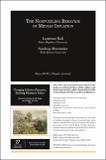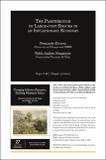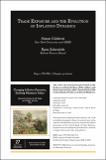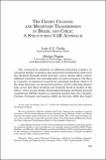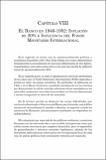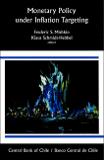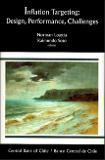Buscar
Mostrando ítems 21-30 de 81
The nonpuzzling behavior of median inflation
For decades, textbooks have explained inflation behavior with
Friedman (1968)’s Phillips curve: the inflation rate depends on
expected inflation and the deviation of unemployment from its natural
rate. Yet this theory has always been controversial, and skepticism
has been rampant in the decade ...
The passthrough of large-cost shocks in an inflationary economy
This paper surveys and modestly extends the theory of menu-cost
models of the behavior of the aggregate price level after large-cost
shocks. It does so in the context of an economy with a high underlying
rate of inflation. It concentrates on the effect of large permanent and
unexpected increases ...
Trade exposure and the evolution of inflation dynamics
The Phillips curve—the relationship between price inflation
and fluctuations in economic activity— is a central building block
of economic models that allow for nominal rigidities and are relied
upon by central banks around the world to gauge cyclical inflationary
pressures and forecast inflation. ...
The transformation and performance of emerging market economies across the great divide of the global financial crisis
Before the Global Financial Crisis, a drive towards greater central-bank autonomy and transparency, as part of the achievement of greater central-bank credibility that had begun in the advanced economies (AE), spread to the emerging market economies (EME). This process was greatly enhanced by the ...
Fiscal inflation and cosmetic defaults in a small open economy
For a small open economy, maintaining a stable exchange rate and moderate levels of inflation is often a goal of primary importance. At the same time, the profession has recognized the tight link between fiscal and monetary policies in determining inflation dynamics. Thus, the goal of a stable exchange ...
Inflation targeting under political pressure
Historically, many emerging economies, particularly in Latin America, battled against persistently high and volatile inflation. Today, emerging economies continue to experience higher inflation than developed ones, and their central banks deviate more frequently from inflation targets. These patterns ...
The credit channel and monetary transmission in Brazil and Chile: a structured VAR approach
The widespread adoption of inflation-targeting regimes by emerging market economies has generated considerable interest in the channels through which monetary policy shocks affect output inflation and other relevant aggregates in such economies. Yet there is a paucity of empirical research for emerging ...
El Banco en 1946-1952: inflación de 20% e influencia del Fondo Monetario Internacional
Este capítulo se inicia con la contextualización política y económica del período 1946-1952. Esta última tuvo como característica fundamental la consolidación de una tasa inflacionaria de dos dígitos registrándose siete años consecutivos con una tasa media de inflación anual de aproximadamente 20%. ...
Monetary policy under inflation targeting
Inflation targeting cum exchange-rate floating has become the framework of choice in countries pursuing an independent and effective monetary policy. Since its adoption by New Zealand (1990) and Chile (1991), central banks of nearly 25 industrial and emerging economies have implemented an explicit ...
Inflation targeting: design, performance, challenges
Inflation rates fell markedly around the world during the last decade of twentieth century. This was the result of a profound change in the conduct of monetary policy, clearly driven by the strong, anti-inflationary stance adopted by central banks in industrial and developing countries. The central ...

